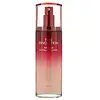What's inside
What's inside
 Key Ingredients
Key Ingredients

 Benefits
Benefits

 Concerns
Concerns

 Ingredients Side-by-side
Ingredients Side-by-side

Water
Skin ConditioningGlycerin
HumectantDimethicone
EmollientHydrogenated Polydecene
EmollientCyclopentasiloxane
EmollientMethylpropanediol
SolventNiacinamide
SmoothingButylene Glycol
Humectant1,2-Hexanediol
Skin ConditioningChondrus Crispus Extract
Skin ConditioningHydroxyacetophenone
AntioxidantTrehalose
HumectantAmmonium Acryloyldimethyltaurate/Vp Copolymer
Sodium Stearoyl Glutamate
CleansingCentella Asiatica Extract
CleansingFicus Carica Fruit Extract
HumectantSodium Hyaluronate
HumectantPolysorbate 20
EmulsifyingSqualane
EmollientParfum
MaskingAdenosine
Skin ConditioningCetyl Ethylhexanoate
EmollientNeopentyl Glycol Diheptanoate
EmollientArctium Lappa Root Extract
Skin ConditioningHydrogenated Lecithin
EmulsifyingHydrogenated Phosphatidylcholine
EmulsifyingAspergillus Ferment
Skin ConditioningCarnosine
Skin ConditioningPolyglyceryl-10 Myristate
Skin ConditioningLactococcus Ferment Lysate
Skin ConditioningCetearyl Alcohol
EmollientPerilla Ocymoides Seed Extract
AntioxidantPolyglyceryl-2 Stearate
EmulsifyingStearic Acid
CleansingCarthamus Tinctorius Seed Oil
MaskingOenothera Biennis Oil
EmollientCeramide NP
Skin ConditioningPolyquaternium-51
Skin ConditioningBeta-Glucan
Skin ConditioningHydrolyzed Hyaluronic Acid
HumectantPolyglutamic Acid
Skin ConditioningLysolecithin
EmulsifyingHyaluronic Acid
HumectantHydrolyzed Sodium Hyaluronate
Skin ConditioningAcetyl Glutamine
Skin ConditioningPotassium Hyaluronate
Skin ConditioningHydroxypropyltrimonium Hyaluronate
Sodium Hyaluronate Crosspolymer
HumectantCoral Powder
AbrasiveHydrolyzed Collagen
EmollientSodium Acetylated Hyaluronate
HumectantSodium Chloride
MaskingPhenylpropanol
MaskingLevulinic Acid
PerfumingSodium Levulinate
Skin ConditioningWater, Glycerin, Dimethicone, Hydrogenated Polydecene, Cyclopentasiloxane, Methylpropanediol, Niacinamide, Butylene Glycol, 1,2-Hexanediol, Chondrus Crispus Extract, Hydroxyacetophenone, Trehalose, Ammonium Acryloyldimethyltaurate/Vp Copolymer, Sodium Stearoyl Glutamate, Centella Asiatica Extract, Ficus Carica Fruit Extract, Sodium Hyaluronate, Polysorbate 20, Squalane, Parfum, Adenosine, Cetyl Ethylhexanoate, Neopentyl Glycol Diheptanoate, Arctium Lappa Root Extract, Hydrogenated Lecithin, Hydrogenated Phosphatidylcholine, Aspergillus Ferment, Carnosine, Polyglyceryl-10 Myristate, Lactococcus Ferment Lysate, Cetearyl Alcohol, Perilla Ocymoides Seed Extract, Polyglyceryl-2 Stearate, Stearic Acid, Carthamus Tinctorius Seed Oil, Oenothera Biennis Oil, Ceramide NP, Polyquaternium-51, Beta-Glucan, Hydrolyzed Hyaluronic Acid, Polyglutamic Acid, Lysolecithin, Hyaluronic Acid, Hydrolyzed Sodium Hyaluronate, Acetyl Glutamine, Potassium Hyaluronate, Hydroxypropyltrimonium Hyaluronate, Sodium Hyaluronate Crosspolymer, Coral Powder, Hydrolyzed Collagen, Sodium Acetylated Hyaluronate, Sodium Chloride, Phenylpropanol, Levulinic Acid, Sodium Levulinate
 Reviews
Reviews

Ingredients Explained
These ingredients are found in both products.
Ingredients higher up in an ingredient list are typically present in a larger amount.
Niacinamide is a multitasking form of vitamin B3 that strengthens the skin barrier, reduces pores and dark spots, regulates oil, and improves signs of aging.
And the best part? It's gentle and well-tolerated by most skin types, including sensitive and reactive skin.
You might have heard of "niacin flush", or the reddening of skin that causes itchiness. Niacinamide has not been found to cause this.
In very rare cases, some individuals may not be able to tolerate niacinamide at all or experience an allergic reaction to it.
If you are experiencing flaking, irritation, and dryness with this ingredient, be sure to double check all your products as this ingredient can be found in all categories of skincare.
When incorporating niacinamide into your routine, look out for concentration amounts. Typically, 5% niacinamide provides benefits such as fading dark spots. However, if you have sensitive skin, it is better to begin with a smaller concentration.
When you apply niacinamide to your skin, your body converts it into nicotinamide adenine dinucleotide (NAD). NAD is an essential coenzyme that is already found in your cells as "fuel" and powers countless biological processes.
In your skin, NAD helps repair cell damage, produce new healthy cells, support collagen production, strengthen the skin barrier, and fight environmental stressors (like UV and pollution).
Our natural NAD levels start to decline with age, leading to slower skin repair, visible aging, and a weaker skin barrier. By providing your skin niacinamide, you're recharging your skin's NAD levels. This leads to stronger, healthier, and younger looking skin.
Another name for vitamin B3 is nicotinamide. This vitamin is water-soluble and our bodies don't store it. We obtain Vitamin B3 from either food or skincare. Meat, fish, wheat, yeast, and leafy greens contain vitamin B3.
The type of niacinamide used in skincare is synthetically created.
Learn more about NiacinamideWater. It's the most common cosmetic ingredient of all. You'll usually see it at the top of ingredient lists, meaning that it makes up the largest part of the product.
So why is it so popular? Water most often acts as a solvent - this means that it helps dissolve other ingredients into the formulation.
You'll also recognize water as that liquid we all need to stay alive. If you see this, drink a glass of water. Stay hydrated!
Learn more about Water